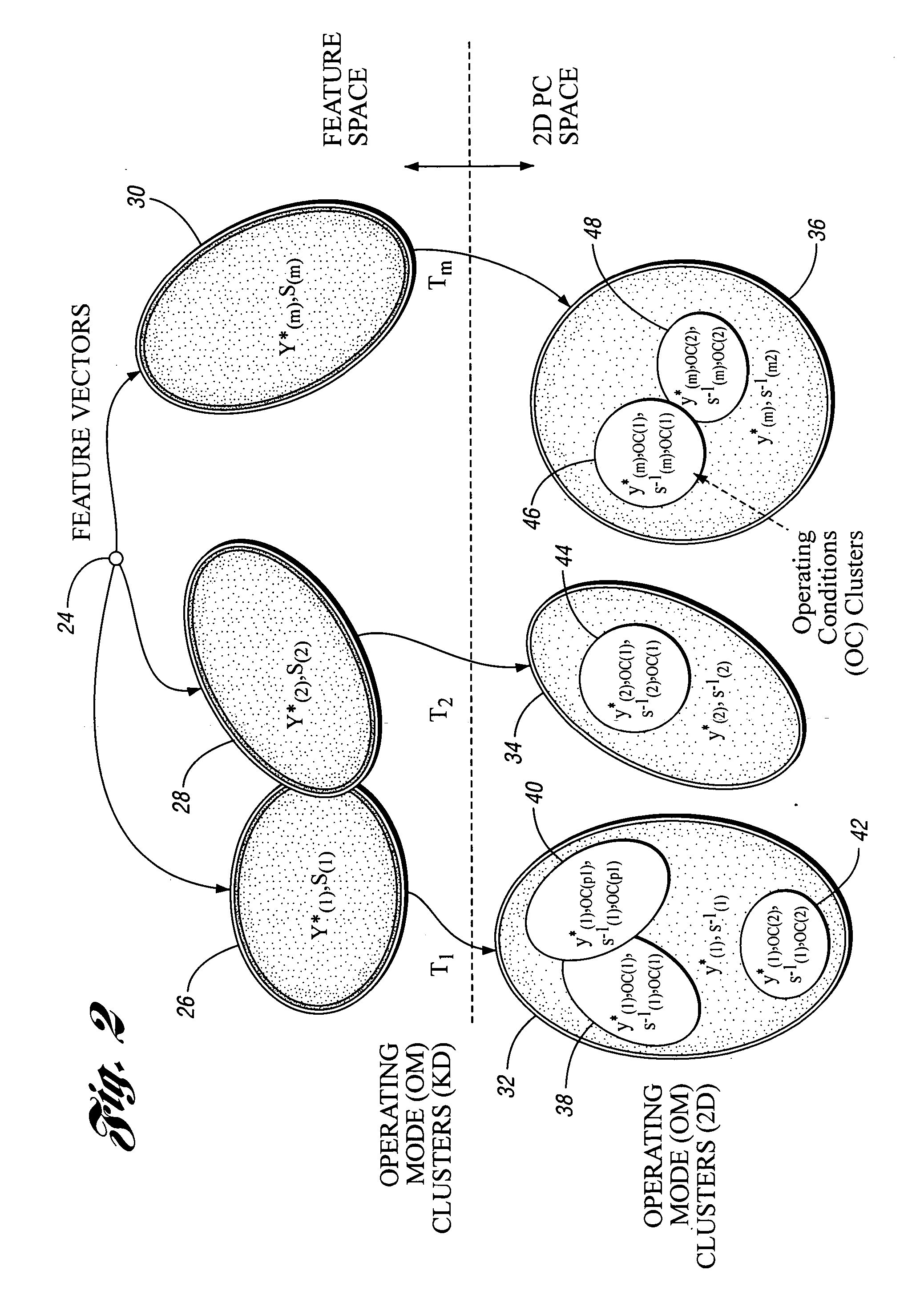Method for predictive maintenance of a machine
a technology for predictive maintenance and machines, applied in the field of method for predictive maintenance of machines, can solve the problems of limiting its usefulness, cbm technology, and limiting the usefulness of a machine, so as to reduce the amount of insignificant information, reduce the need for human intervention, and reduce the dimensionality of the feature space
- Summary
- Abstract
- Description
- Claims
- Application Information
AI Technical Summary
Benefits of technology
Problems solved by technology
Method used
Image
Examples
Embodiment Construction
)
[0030]FIG. 1 shows a flow chart 10 illustrating a portion a method used by a PdM Agent in accordance with the present invention. There are two execution phases in the PdM Agent algorithm—an initialization phase and a monitoring phase. Both phases are based on unsupervised learning. The initialization phase, shown in FIG. 1, is optional; however, its execution can have a positive effect on the performance of the learning algorithms in the monitoring phase. During the initialization phase, initial operating modes are identified and their corresponding parameters are calculated in a batch mode. Once the initialization phase is performed, the PdM Agent enters a monitoring phase which is described below.
[0031] Both the initialization and monitoring phases are preceded by a feature extraction phase wherein a set of features is extracted from the time domain sensor signal. For example, a machine such as a fan, compressor, pump, etc. may have attached to it one or more sensors configured ...
PUM
 Login to View More
Login to View More Abstract
Description
Claims
Application Information
 Login to View More
Login to View More - R&D
- Intellectual Property
- Life Sciences
- Materials
- Tech Scout
- Unparalleled Data Quality
- Higher Quality Content
- 60% Fewer Hallucinations
Browse by: Latest US Patents, China's latest patents, Technical Efficacy Thesaurus, Application Domain, Technology Topic, Popular Technical Reports.
© 2025 PatSnap. All rights reserved.Legal|Privacy policy|Modern Slavery Act Transparency Statement|Sitemap|About US| Contact US: help@patsnap.com



